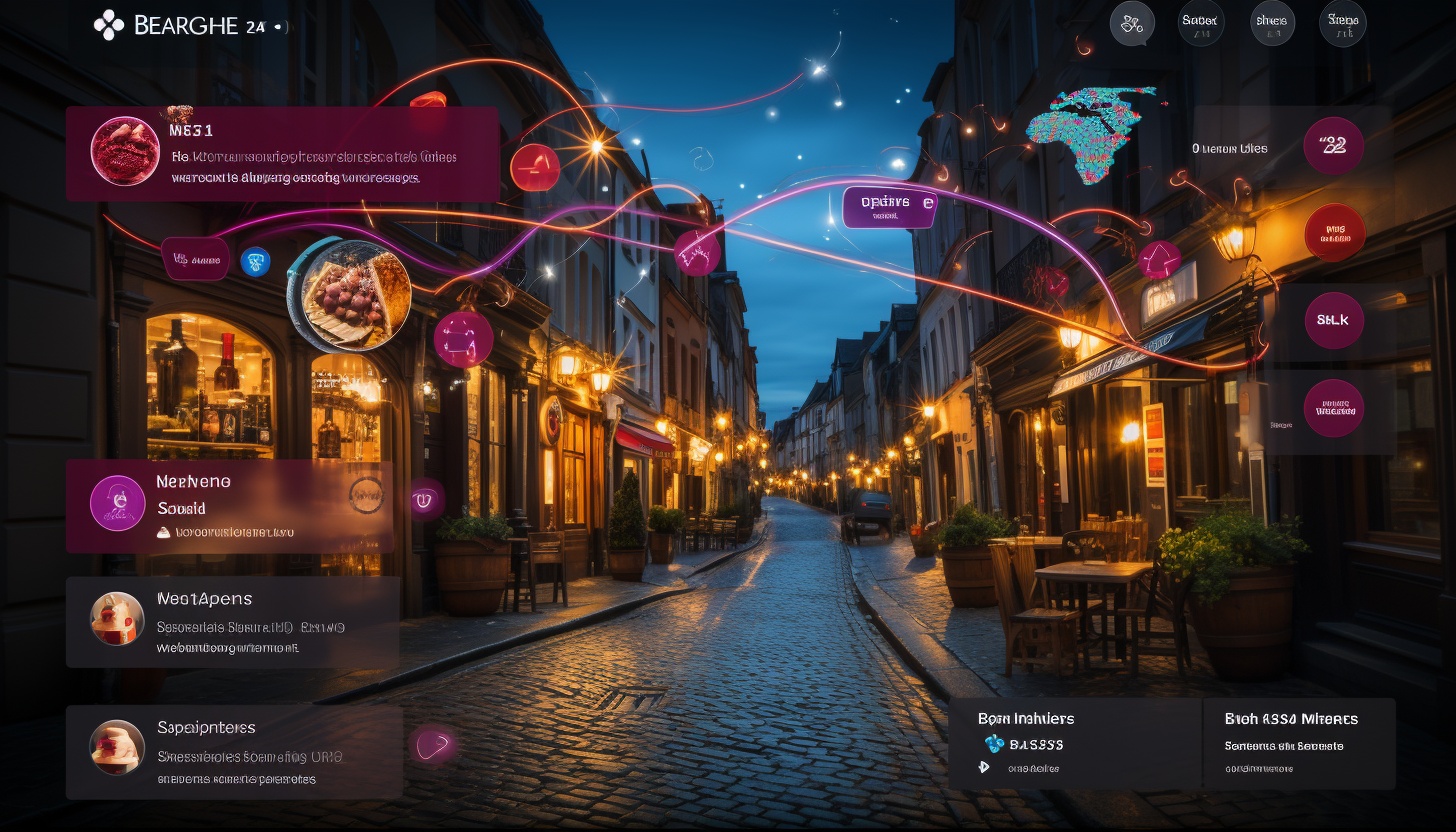
The Economics of Dating Apps: How They Monetize and Sustain Themselves
Are you curious about how dating apps manage to stay afloat in the competitive market? Wonder no more!
In this article, we will explore the economics behind these platforms and discover the ingenious ways they monetize and sustain themselves.
By employing a freemium model, in-app purchases, advertising revenue, subscription plans, and partnerships, dating apps have found innovative strategies to generate income.
Get ready to dive deep into the data and gain insightful insights into the thriving world of dating app economics.
Freemium Model: Offering Basic Services for Free With Optional Paid Upgrades

You can access basic services for free on dating apps, but they also offer optional paid upgrades. This freemium model has become increasingly popular in the app industry, allowing users to experience the platform without any financial commitment. However, dating apps have found ways to monetize their services through these optional paid upgrades.
These upgrades often come in the form of premium subscriptions that offer additional features and benefits. For example, you might gain access to advanced search filters, unlimited swipes, or the ability to see who’s liked your profile. These enhancements can enhance the user experience and provide a competitive edge in the crowded dating app market.
The decision to upgrade often depends on the value proposition offered by the dating app. Users weigh the benefits of the premium features against the cost of the upgrade. Dating apps employ data-driven pricing strategies to ensure that the upgrade offers enticing value while still generating revenue for the platform. This requires a careful balancing act to determine the right price point that maximizes user adoption and profitability.
In-app purchases: selling virtual goods or premium features within the app. By offering virtual goods or additional features for purchase within the app, dating apps create additional revenue streams. These purchases can include virtual gifts to send to other users, access to exclusive content, or the ability to boost your profile’s visibility. The availability of these in-app purchases adds another layer of customization and personalization to the user experience, while simultaneously generating revenue for the app.
In-App Purchases: Selling Virtual Goods or Premium Features Within the App

The monetization strategies employed by dating apps extend beyond the freemium model, with in-app purchases offering users the opportunity to enhance their experience by purchasing virtual goods or premium features within the app. This strategy has proven to be highly effective in generating revenue for dating apps, as it allows them to tap into the willingness of users to pay for additional features or perks.
One common type of in-app purchase in dating apps is the ability to send virtual gifts to other users. These gifts can range from virtual flowers or chocolates to more personalized items. By offering these virtual goods, dating apps create a sense of novelty and excitement, encouraging users to engage more deeply with the app.
Another popular in-app purchase option is the ability to access premium features. These features often include advanced search filters, the ability to see who’s viewed your profile, or the ability to send unlimited messages. By offering these premium features, dating apps cater to users who are willing to pay for a more personalized and enhanced experience.
Data shows that in-app purchases can be a significant source of revenue for dating apps. According to a report by App Annie, in-app purchases accounted for over 50% of total revenue generated by dating apps in 2020. This highlights the importance of offering attractive virtual goods and premium features to users.
Advertising Revenue: Displaying Ads to Generate Income

Dating apps generate income by displaying ads. This form of revenue stream has become increasingly popular among dating apps as a way to monetize their platforms. By allowing advertisers to display ads within the app, dating apps can generate a substantial amount of income. In fact, according to a report by eMarketer, dating apps are projected to generate $3.2 billion in advertising revenue by 2023.
One of the main advantages of advertising revenue is its scalability. With a large user base, dating apps have the potential to attract a wide range of advertisers. This allows them to cater to different target audiences and maximize their ad revenue. Furthermore, by offering targeted advertising options, dating apps can provide advertisers with the opportunity to reach specific demographics, enhancing the effectiveness of their campaigns.
To optimize their advertising revenue, dating apps often employ various strategies. These include implementing native ads that seamlessly blend into the app’s interface, as well as using personalized ads based on user preferences and behavior. By delivering ads that are relevant and engaging, dating apps increase the likelihood of users clicking on them, thereby generating more revenue.
However, it’s important for dating apps to strike a balance between displaying ads and maintaining a positive user experience. Excessive or intrusive ads can lead to user dissatisfaction and even abandonment of the app. To mitigate this risk, dating apps must carefully consider the placement, frequency, and relevance of ads to ensure they enhance rather than detract from the user experience.
Subscription Plans: Charging Users a Monthly or Yearly Fee for Premium Access

Users who frequently utilize dating apps can gain access to premium features by subscribing to monthly or yearly plans. These subscription plans offer additional benefits and privileges that enhance the user experience and increase the chances of finding a compatible match. By charging a fee for premium access, dating apps can generate a steady stream of revenue and sustain their operations.
Subscription plans typically offer users a range of exclusive features and perks. These may include advanced search filters, unlimited likes or swipes, the ability to see who has liked or viewed their profile, and the option to message other users without any restrictions. In addition, subscribers may also enjoy an ad-free experience, priority customer support, and access to special events or promotions.
To illustrate the value proposition of subscription plans, consider the following table:
| Features | Basic (Free) | Premium |
|---|---|---|
| Advanced search filters | Limited | Unlimited |
| Likes/swipes per day | Limited | Unlimited |
| Profile visibility | Limited | Increased visibility |
| Messaging restrictions | Yes | No restrictions |
| Ad-free experience | No | Yes |
Partnerships and Sponsorships: Collaborating With Brands or Businesses for Promotional Opportunities

One way to monetize and sustain dating apps is by forming partnerships and securing sponsorships with brands or businesses for promotional opportunities. By collaborating with well-known brands, dating apps can’t only generate additional revenue but also enhance their brand image and attract more users. According to a recent study, 78% of users are more likely to trust a dating app if it partners with reputable brands.
These partnerships can take various forms, such as co-branded marketing campaigns, sponsored events, or exclusive offers for app users. For example, a dating app might collaborate with a popular restaurant chain to offer users discounts or special promotions for a romantic dinner. This not only provides value to the users but also strengthens the app’s positioning as a facilitator of meaningful connections.
In addition to revenue from sponsorships and partnerships, dating apps can also benefit from increased user engagement. When users see their favorite brands associated with the app, they’re more likely to spend more time using the platform and interacting with potential matches. This increased engagement can lead to higher user retention rates and ultimately drive more revenue through in-app purchases or premium subscriptions.
Furthermore, partnerships with brands can also provide valuable data and insights that can be used to improve the user experience and tailor recommendations. By analyzing user behavior and preferences in relation to sponsored content, dating apps can gain a better understanding of their target audience and optimize their algorithms accordingly.
Conclusion
In conclusion, the economics of dating apps are diverse and dynamic. They employ various monetization strategies, such as freemium models, in-app purchases, advertising, and subscription plans.
Additionally, partnerships and sponsorships offer promotional opportunities. These strategies help dating apps sustain themselves by generating income and providing users with premium features and services.
By leveraging these monetization techniques, dating apps have created a thriving industry that continues to grow and evolve.






